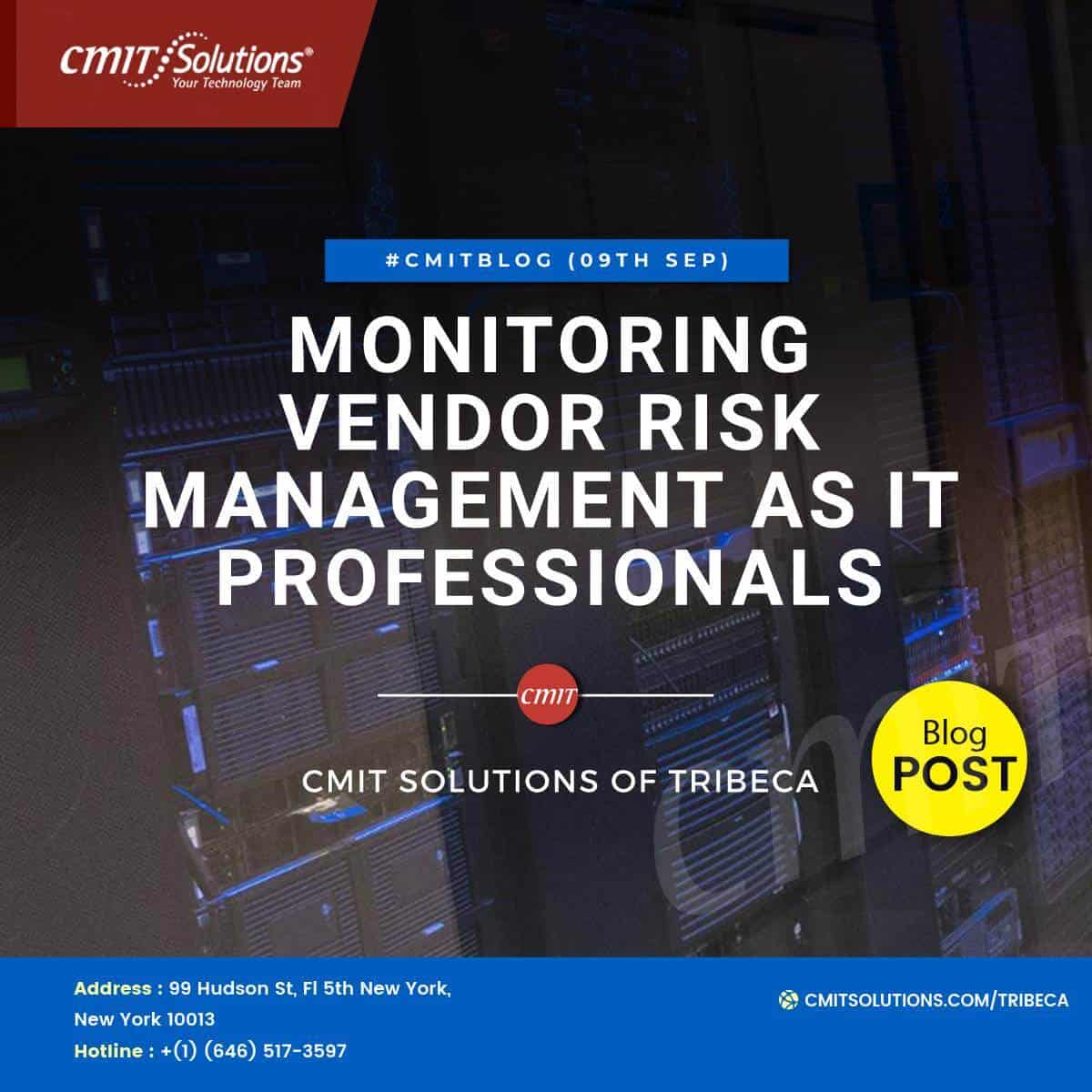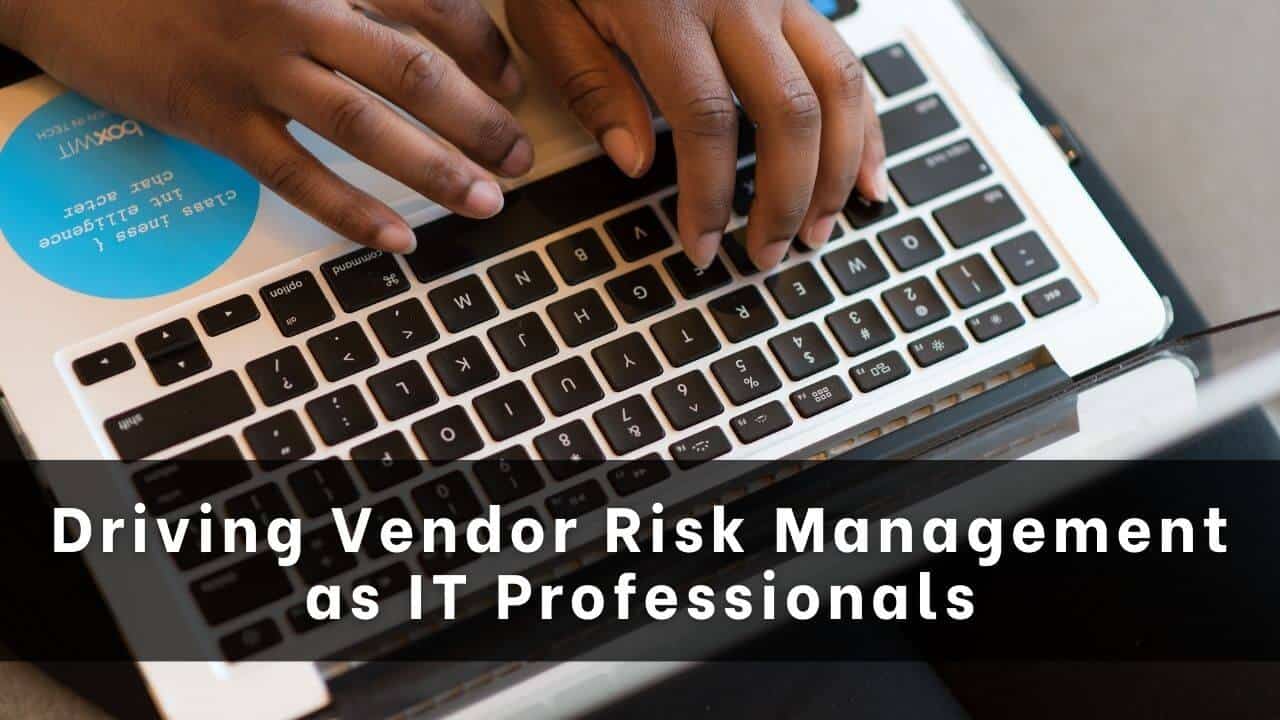One of the great resources available to enterprises in today’s era is the extensive value-added services and solutions ecosystem. Particularly in technology solutions, there is no limit to the services of which enterprises can avail themselves.
Additionally, if a company needs a particular solution or service they don’t tackle in-house, there is a high chance a third-party vendor can take care of that.
It is significantly beneficial for enterprises today to access these large pools of third-party resources. However, there can be security difficulties for organizations using third-party vendors and their services despite the advantages. Let’s monitor vendor risk management as IT professionals and see how enterprises can accomplish this in a highly intricate cybersecurity world.
How can third-party vendors define cybersecurity risks?
As mentioned, third-party vendors can be highly advantageous to enterprises doing business today. They allow organizations to dodge building out technology and other solutions in-house and absorb these as a service. These services are vital for small companies with the resources or technical expertise to create needed infrastructure and software solutions.
However, when enterprises interact with technology solutions that fuse with their enterprise-critical and sensitive systems, they must recognize the potential cybersecurity risks embedded.
According to the proverbial “weakest link in the chain,” if the cybersecurity practices and posture of a third-party vendor are not that rich, if their solutions blend with your systems, the resulting cybersecurity risks now affect your plans. So what are the real-world results of a vendor-related data breach?
Make a note of the following. In the year 2013, Target Corporation, known as one of the colossal retailers in the U.S., fell prey to a data breach due to the hack of a third-party enterprise possessing network passwords for Target’s network.
Attackers initially hacked the network of Fazio Mechanical Services, a renderer of refrigeration and HVAC services for Target. As a result, attackers yielded 40 million accounts, and Target agreed to pay $10 million in losses to clients who had data stolen.
Definition of Vendor Risk Management (VRM)
To fulfill the cybersecurity difficulties in working with third-party vendors, organizations must aim at vendor risk management (VRM). What is VRM? Vendor risk management (VRM) enables organizations to explore and mitigate risks associated with third-party vendors.
With VRM, enterprises have distinctness into the vendors they have established relationships with and the security controls they have implemented to make sure their systems and processes are secure and safe.
With the major risks and compliance regulations that have evolved for enterprises today, VRM is a discipline that must be given proper attention and have the buy-in from IT professionals and board members alike.
Driving Vendor Risk Management as IT Professionals
The responsibility to discover, comprehend and mitigate vendor risk management related to overall cybersecurity primarily falls on the IT department and SecOps. Additionally, IT is often responsible for forming the VRM strategy for the company and making sure the company’s overall cybersecurity is not sacrificed working with third-party solutions.
To implement a VRM successfully, companies need to have a framework for managing vendor risk. Here are the seven steps we suggest taking to ensure your organization is safe from vendor risk:
Figure out all vendors rendering services for your companies
Describe the acceptable level of risk for your organization
Identify the most critical risks
List the vendors who provide services for your business
Escort regular vendor risk assessments
Have firm contracts with vendors and proactively follow the terms
Regulate vendor risks over time
1 — Figure out all vendors offering services for your company
Before you can effectively comprehend the risk to your business, you need to know all vendors used by your enterprise. A thorough inventory may comprise everything from lawn care to credit card services.
However, having a close comprehension and inventory of all vendors helps to ensure risk is calculated appropriately.
2 — Define the acceptable level of danger for your company
Different types of enterprises may have different expectations and risk areas that alter. For instance, what is defined as necessary to a healthcare company may differ from a financial institution. Whatever the case, deciding the acceptable levels of risks helps ensure the appropriate mitigations are in place and the risk is acceptable to industry stakeholders.
3 — Figure out the most critical risks
The risk posed by some vendors is likely going to be higher than others. For instance, a lawn care firm with no access to your technical infrastructure will presumably be less risky than a third-party vendor with network-level access to specific business-critical systems. Therefore, ranking your risk levels linked to specific vendors is important to comprehend your overall risk.
4 — Classify the vendors who offer services for your business
After vendors are found, the ones who will provide services for your business should be classified according to what services they provide and the risks they pose to your enterprise.
5 — Conduct regular vendor risk assessments
Even if an enterprise poses a slight risk at one point, this may change later. Like your enterprise, the state of vendor infrastructure, services, software, and cybersecurity posture is continually in flux. Therefore, perform regular vendor assessments to instantly recognize a sudden change in the risk to your enterprise.
6 — Have regular contracts with vendors and proactively keep a tab of the terms
Make sure that you have substantial contracts with all vendors. A contractual agreement legally authorizes the expectations across all fronts, comprising security and risk assessment. Track the warranties and terms over time. It allows figuring out any deviation from the contract terms as expressed.
7 Monitor vendor risks over time
Monitor the risks imposed by vendors over time. As discussed above, regular vendor risk assessments and monitoring the risk over time help gain visibility into the risk that may continue to boom with a specific vendor. It may signal the necessity to look for another vendor.
Track credential security for third-party vendors
A field of concern working with a vendor or a third-party vendor used by a business is credentials. How do you make sure that credentials used by third-party vendors are secure? How do you show you are on top of password security in your surrounding if an enterprise requests proof of your credential security?
Specops Password Policy is a solution that enables businesses to bolster their password security and overall cybersecurity posture by:
Breached password protection
Implementing strong password policies
Allowing using multiple password dictionaries
Clear and intuitive consumer messaging
Real-time dynamic feedback to the customer
Length-oriented password expiration
Blocking of standard password components like usernames in passwords
Smoothly implement passphrases
Finishing it Up
Vendor Risk Management (VRM) is an important part of the overall cybersecurity processes of companies today. It supports managing the risks associated with third-party vendors and how these interact with your company. Enterprises must implement a framework to evaluate vendor risk and ensure these risks are tracked, documented, and navigated as needed.
Specops Password Policy and Specops Password Auditor enable enterprises to strengthen password security in their environment. It aids in mitigating any risks associated with vendor passwords and easily monitors passwords to know if these become breached. Additionally, Password Auditor can produce reports if you render third-party services to companies requesting you offer information regarding your password settings and policies.




